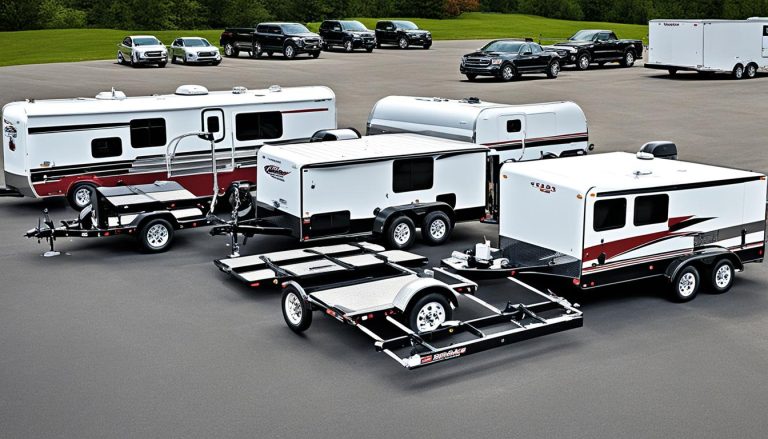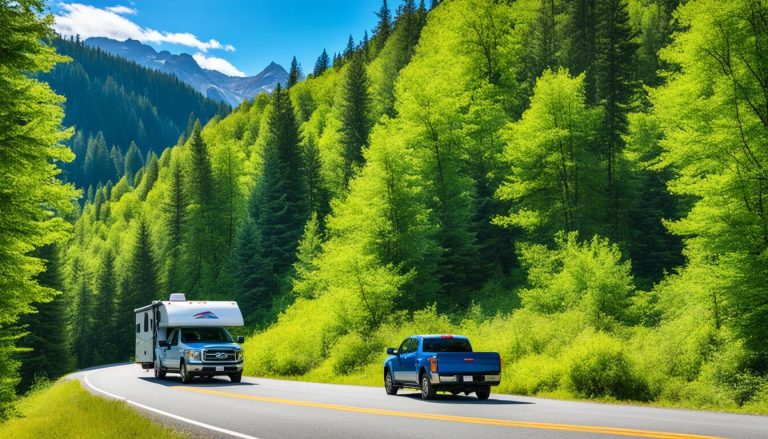Maintenance Tips Towable RV: Pre-Trip, Winterize, Store
gorvlifestyle.com and its partners may earn a commission if you purchase a product through one of our links
Investing in towable RV care is more than a matter of function; it’s about fostering a mobile sanctuary that’s ready for the road whenever adventure calls. Regular adherence to an RV maintenance checklist is key to ensuring that your home on wheels is not only safe for your next excursion but also primed to withstand the tests of time and nature. From savvy RV storage tips to meticulous maintaining your RV for storage, these strategies constitute an essential defense against the rigors of the elements.
Seasonal transitions, particularly the onset of colder weather, call for specific seasonal maintenance RV protocols. As temperatures plummet, thorough winter RV maintenance becomes crucial in preserving the integrity and functionality of your vehicle. But fret not; with the right guidance, winterizing your RV and storing it correctly need not be a daunting task.
Key Takeaways
- Meticulous inspection and maintenance are pivotal for extending the service life of your towable RV.
- Adherence to a pre-trip checklist can prevent unexpected issues and ensure a safe journey.
- Effective winterization and proper storage methods protect the RV from harsh weather conditions.
- Choosing the right RV cover and storage solutions will shield your investment from potential damage.
- Seasonal maintenance is not just about endurance but about maintaining the quality and comfort of your towable RV.
Understanding the Importance of Regular RV Maintenance
Ensuring that your towable RV care routine is up to the mark is more than a matter of cleanliness and aesthetics; it is an investment in the longevity and performance of your mobile sanctuary. Adhering to a structured RV maintenance checklist can prevent road trip frustrations and costly repairs, securing not just the value of your RV but also the safety and joy of your adventures. From the mechanics to the electronics, every system demands attention before you hit the road, which is where pre-trip checks become vital. Let’s delve into the integral components that should feature on every RV enthusiast’s maintenance schedule.
Conducting regular inspections and maintenance ensures that your travels remain unhampered by unexpected mechanical woes. Indeed, the serenity of nature’s landscapes can only be fully appreciated when our vehicles are as ready for the journey as we are. Below is a detailed RV maintenance checklist designed to guide you through the essential tasks that safeguard the performance and safety of your towable RV.
| Checklist Item | Frequency | Details |
|---|---|---|
| Tire Inspection & Pressure Check | Before Every Trip | Ensure tires are free of damage and inflated to the correct pressure. |
| Battery Maintenance | Monthly | Check for corrosion and charge levels to prevent power issues. |
| Water System Check | Seasonally / As Needed | Inspect for leaks and flush the system regularly. |
| Brake System Inspection | Annually / Every 10,000 Miles | Review brake pads, linings, and fluid levels. |
| Sealant and Joint Examination | Bi-Annually | Check for cracks or separations and reseal as needed. |
| Appliance & System Check | Seasonally | Review heating, cooling, and other systems for proper operation. |
It’s imperative to remember that this checklist is a starting point—each towable RV may have specific needs. Nevertheless, these core elements of RV maintenance are universally acknowledged as being pivotal to the care and functionality of your recreational vehicle, ensuring it continues to be your home away from home on countless journeys to come.
Pre-Trip Inspections: Safeguarding Your Towable RV Adventure
Embarking on a journey in a towable RV begins with a series of pre-trip checks that are essential for ensuring a safe and enjoyable trip. These inspections are the cornerstone of responsible towable RV care, as they spot potential issues before they become road hazards. Below are the critical steps to follow to make sure your adventure is as smooth as it is memorable.
Examining Tire Health and Pressure
One of the foremost checks involves assessing the condition of your RV’s tires. Proper tire health and pressure are vital for maintaining stability on the road and improving fuel efficiency. A thorough examination includes checking for adequate tread depth, signs of wear, and ensuring that each tire is inflated to the manufacturer’s recommended pressure. This not only minimizes the risk of tire failure but also contributes to the overall handling and safety of your RV.
Testing Lights and Electrical Connections
Visibility is a non-negotiable aspect of road safety. Testing all lights, including brake lights, turn signals, and headlights, confirms that you can see and be seen by other drivers. Ensuring reliable electrical connections is also crucial for the synchronized operation of towing mechanisms and onboard amenities. Secure and functional electrical systems help prevent accidents caused by miscommunication on the road.
Ensuring Proper Functioning of Safety Equipment
Before you hit the road, inspecting all safety equipment is imperative. This includes items like fire extinguishers, carbon monoxide detectors, and smoke alarms, along with your hitch system and any additional towing accessories. Assuring that these crucial components are in working order could be life-saving in the event of an emergency.
Verifying Fluid Levels and Leak Check
Lastly, checking your RV’s fluid levels and searching for any signs of leaks are pre-trip steps that should not be overlooked. Engine oil, transmission fluid, coolant, and brake fluid are all integral to the smooth operation of your vehicle. A leak check can help you identify issues that, if left unresolved, could lead to significant engine or structural damage over time.
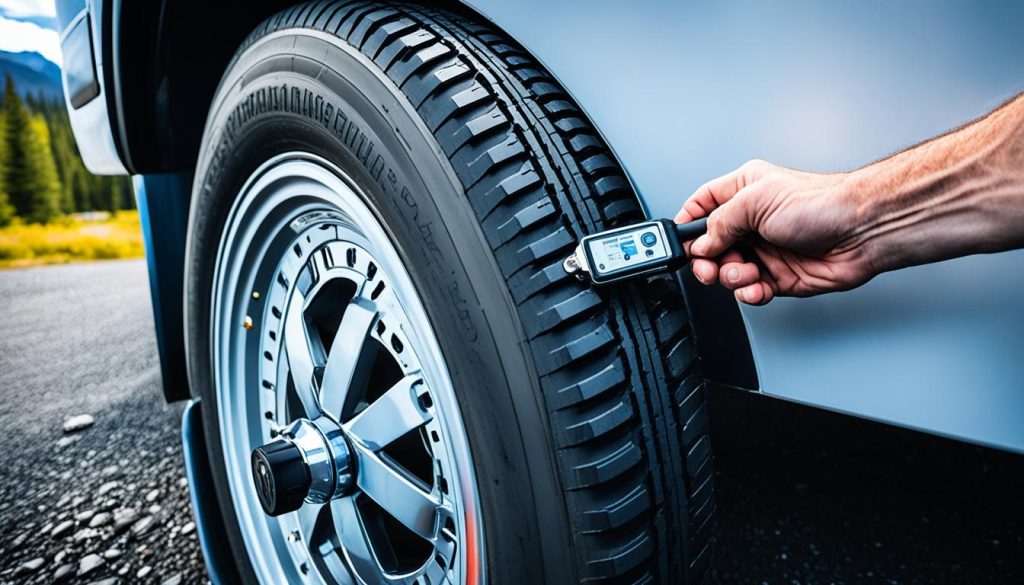
Main Keyphrase: Maintenance Tips Towable RV (pre-trip checks, winterization, storage)
Maintaining your towable RV is essential not just for extending its service life but for guaranteeing enjoyable and safe travels. Whether you’re gearing up for a summer road trip or preparing your vehicle for winter dormancy, it’s essential to follow a series of Maintenance Tips for Towable RV to keep it in top-notch condition. Let’s delve into the crucial triad of RV maintenance: pre-trip checks, winterization, and storage.
- Pre-Trip Checks:
Prior to hitting the road, ensure your RV is ready to face the journey ahead. Tending to tires, brakes, lights, and connections can avert mishaps and interruptions to your adventure.
- Winterization:
With seasonal changes, specific protocols like insulating pipes and adding antifreeze protect your RV’s internal systems from the ravages of frigid weather.
- Storage:
When you’re not cruising the countryside, finding a suitable spot to store your RV can prevent unnecessary exposure to the elements and potential damage.
To reinforce these points, here’s an in-depth look at what some of these maintenance tasks entail:
| Maintenance Aspect | Key Actions | Benefits |
|---|---|---|
| Pre-Trip Checks | Inspect tires, test all lights, check fluid levels | Improved safety and reduced risk of road troubles |
| Winterization | Apply antifreeze to plumbing, seal windows and doors | Prevention of freeze-related damage |
| Storage | Cover RV, choose location wisely, maintain batteries | Protection against weather, pests, and deterioration |
Remember, while the overall goal of RV maintenance is consistent across the board, the specific tasks may vary based on your vehicle’s model and the environments you’re exposing it to. What doesn’t change is the importance of diligence and regularity in these practices.
Embracing these maintenance tips for your towable RV is akin to investing in peace of mind. By routinely performing pre-trip checks, ensuring thorough winterization, and securing proper storage, you not only preserve your RV’s integrity but also its resale value, ensuring many more years of memorable excursions on the open road.
Selecting the Ideal Storage Solutions for Your RV
Choosing the right storage for your towable RV is not just a matter of convenience, it’s crucial for the longevity and protection of your investment. With various options available, RV owners must consider the benefits and limitations of indoor and outdoor storage solutions, factor in the potential costs, and ensure their choice aligns with the need for strong security measures.
Indoor vs Outdoor Storage Options
When it comes to RV storage tips, the debate between indoor and outdoor storage is prominent. Indoor storage shields your RV from harsh weather conditions, providing an environment that can prevent rust, sun damage, and wear from the elements. Conversely, outdoor storage offers a more cost-effective solution, though it typically requires additional steps to protect the vehicle against environmental factors.
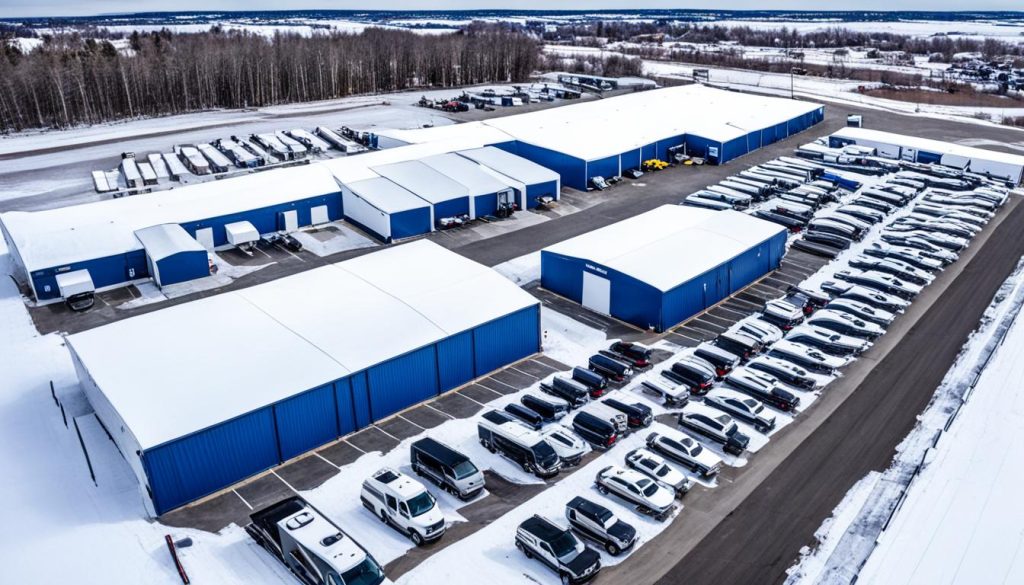
Factors Influencing Storage Costs
The storage costs for an RV can vary widely based on several factors. The size of your RV directly impacts the price, as larger vehicles necessitate more space. Additionally, the choice between basic outdoor storage lots and upscale indoor storage with climate control and power connections will significantly affect the cost. Your geographic location and the local climate are also important considerations, as regions with extreme weather may necessitate more protective storage options.
Security Measures for Peace of Mind
No price can be placed on peace of mind, making security a top priority when storing your RV. Look for storage facilities equipped with comprehensive surveillance systems, robust lighting, secure fencing, and controlled access hours. These features not only deter potential theft and vandalism but also ensure that your RV remains safe and sound until your next adventure.
Covering and Shielding Your RV from the Elements
When it comes to protecting one’s investment, RV owners understand the importance of keeping their mobile sanctuaries safe from harsh weather. Effective covering and strategic use of protective accessories play an essential role in preserving the life and beauty of an RV. Let’s delve into the choices and benefits of selecting top-tier protection for your RV.
Choosing Quality RV Covers
A high-quality RV cover is the first line of defense against environmental damages. The right cover offers not just UV protection, but also breathability, preventing moisture build-up which can lead to mold. Diligent RV owners seek covers that provide a snug fit, ensuring that their RV exteriors are shielded from sun, wind, and rain with the utmost efficiency.
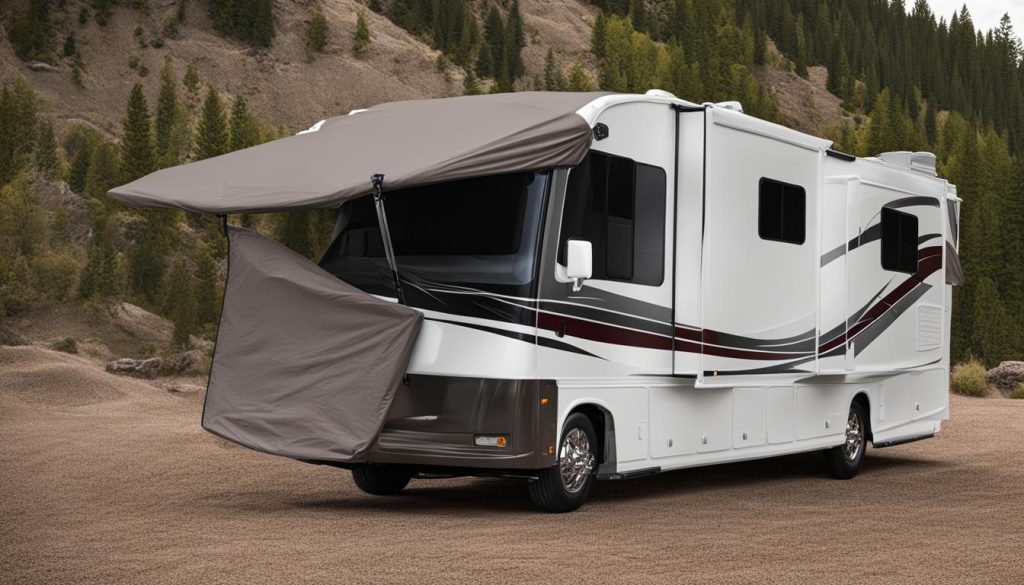
| Features | Benefits |
|---|---|
| Multi-layer top panel | Superior resistance against rain and snow |
| UV-resistant coating | Protects against harmful solar rays, reducing fading and cracking |
| Breathable side panels | Prevents moisture accumulation and mold growth |
| Adjustable tension panels | Ensures a tight fit to withstand wind |
Benefits of Tire Covers
Tire covers are an often overlooked but vital component when it comes to maintaining the condition of your rig. They prevent the sidewalls of your tires from UV-induced deterioration, a common issue which could lead to expensive replacements and potential safety hazards. A set of quality tire covers can significantly extend the life of your RV’s tires.
Addressing Humidity and UV Exposure
Combating humidity and UV rays requires a multifaceted approach. While RV covers tackle the external threats, proactive measures must be taken inside the RV as well. Employing dehumidifiers will help in maintaining the structural integrity and comfort of the interior. When RVs sit under the sun unprotected, UV rays can cause severe damage to both exterior and interior materials. Strategic use of UV protection techniques, such as deploying window sunshades, is a smart move for any RV enthusiast.
Seasonal Maintenance: Preparing for the Colder Months
As the mercury dips, dedicated RV enthusiasts know it’s time to focus on winterization and seasonal maintenance to ensure their home-on-wheels can withstand the cold. Cold weather RV care involves a checklist of tasks that are crucial for preventing costly repairs and extending the life of your vehicle. Understanding and implementing proper winter RV maintenance strategies will save you time and money in the long run, securing your investment and making sure you’re ready to hit the road once the snow melts.
From the plumbing to the batteries, every system in your RV requires special attention as temperatures drop. Insulating pipes, using RV-specific antifreeze, and sealing up any gaps that might invite unwelcome pests are all essential steps in preparing your vehicle for the offseason. Here’s a handy table to ensure every aspect of your RV gets the seasonal care it needs.
| Winterization Task | Description | Frequency |
|---|---|---|
| Plumbing Antifreeze | Add non-toxic antifreeze to plumbing systems | Once before freezing temps |
| Insulation Check | Ensure all pipes and water tanks are well insulated | Annually |
| Seal Inspection | Examine and repair seals around windows and doors | Before winter season |
| Pest Prevention | Close off entry points and set traps if necessary | As needed |
| Battery Care | Remove batteries and store in a warm, dry place | Throughout winter |
While the tasks may seem daunting, regularly performing these winter RV maintenance actions will give you peace of mind during the cold season and guarantee your RV is in peak condition for your next adventure. Remember, proper seasonal maintenance RV practices are the key to a long-lasting and reliable home on the road.
Battery Maintenance: Power Preservation Through Winter
The winter season brings a unique set of challenges for RV enthusiasts, particularly when it comes to preserving the power source of their home on wheels. RV battery maintenance is not just a routine task; it’s a critical step in ensuring your vehicle’s readiness for your next adventure. The key to effective battery storage lies in understanding the nuances of freeze damage prevention and implementing the right strategies to maintain battery life during the colder months.
Removing and Storing RV Batteries
When preparing your RV for the winter, battery care should be at the top of your checklist. Proper removal and storage of your RV’s battery are fundamental to prevent any potential damage. Here’s an essential guide to ensure your battery is stored correctly:
- Turn off all power sources and disconnect the negative terminal first to avoid short circuits.
- Remove the battery and clean the terminals and the case to prevent corrosion.
- Store the battery in a dry, cool place, away from direct sunlight and freezing temperatures.
- Ensure the storage area is well-ventilated to avoid the accumulation of harmful gases.
Monitoring Battery Charge to Prevent Freeze Damage
Keeping an eye on the battery charge is crucial, especially during the off-season. A fully charged battery has a lower risk of freezing, which is a common cause of permanent battery damage in cold climates. Here’s how to monitor your battery and keep it in peak condition:
- Periodically check the battery’s voltage to ensure it maintains a charge above 12.4 volts.
- Use a trickle charger or a solar panel to keep the battery topped up without overcharging it.
- Inspect the electrolyte levels and top up with distilled water if necessary (for lead-acid batteries).
- If you’re not able to periodically check on the battery, consider investing in a smart charger that can maintain the battery’s charge and health automatically.
Tackling Humidity: Combating Mold and Mildew in Your RV
Maintaining the perfect balance of humidity within your towable RV isn’t just about comfort; it’s a crucial step in preventing the growth of mold and mildew. These unwelcome intruders not only cause musty odors and potentially damage your RV’s interior but can also pose health risks. Accordingly, a strategic approach towards humidity control is a necessary aspect of RV interior maintenance, particularly during the seasonal storage of your home on wheels.
Understanding the Importance of Air Circulation
Effective air circulation plays a vital role in humidity management. It allows for an even distribution of air throughout the RV interior which helps to keep condensation–a primary culprit in mold and mildew formation–at bay. Employing vent covers can provide an airtight solution that keeps precipitations like rain and snow out while still promoting the necessary airflow to curb moisture buildup. It’s this kind of attention to detail that ensures mold prevention, safeguarding both the structural integrity of your RV and the health of its occupants.
Effective Use of Desiccants and Dehumidifiers
Incorporating desiccants, such as silica gel packets, and a reliable dehumidifier into your RV maintenance routine can significantly improve humidity control within the vehicle’s interior. These tools actively absorb excess moisture from the air, which is particularly beneficial when your RV is closed up during storage periods. Regular checks to monitor the humidity levels inside your RV and timely replacement or recharging of desiccants are essential to maintain an environment that is hostile to mold and mildew growth. Remember, proactive mildew removal and maintenance efforts go a long way in preserving the pristine condition of your RV for many adventures to come.





